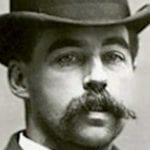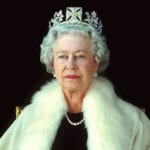 Miscellaneous
Miscellaneous  Miscellaneous
Miscellaneous  Politics
Politics 10 Lesser-Known Far-Right Groups of the 21st Century
 History
History Ten Revealing Facts about Daily Domestic Life in the Old West
 Weird Stuff
Weird Stuff 10 Everyday Products Surprisingly Made by Inmates
 Movies and TV
Movies and TV 10 Actors Dragged out of Retirement for One Key Role
 Creepy
Creepy 10 Lesser-Known Shapeshifter Legends from Around the World
 Animals
Animals 10 Amazing Animal Tales from the Ancient World
 Gaming
Gaming 10 Game Characters Everyone Hated Playing
 Books
Books 10 Famous Writers Who Were Hypocritical
 Humans
Humans 10 of the World’s Toughest Puzzles Solved in Record Time
 Miscellaneous
Miscellaneous 10 Ironic News Stories Straight out of an Alanis Morissette Song
 Politics
Politics 10 Lesser-Known Far-Right Groups of the 21st Century
 History
History Ten Revealing Facts about Daily Domestic Life in the Old West
Who's Behind Listverse?

Jamie Frater
Head Editor
Jamie founded Listverse due to an insatiable desire to share fascinating, obscure, and bizarre facts. He has been a guest speaker on numerous national radio and television stations and is a five time published author.
More About Us Weird Stuff
Weird Stuff 10 Everyday Products Surprisingly Made by Inmates
 Movies and TV
Movies and TV 10 Actors Dragged out of Retirement for One Key Role
 Creepy
Creepy 10 Lesser-Known Shapeshifter Legends from Around the World
 Animals
Animals 10 Amazing Animal Tales from the Ancient World
 Gaming
Gaming 10 Game Characters Everyone Hated Playing
 Books
Books 10 Famous Writers Who Were Hypocritical
 Humans
Humans 10 of the World’s Toughest Puzzles Solved in Record Time
10 Failed 20th-Century Coups
There have been a multitude of coups throughout the past, many of which have monumentally shaped the course of history in bold and dramatic fashion. The 20th century in particular was marred by the age-old struggle for power. George Orwell chronicled these struggles in great detail in 1984, where he wrote, “We know that no one ever seizes power with the intention of relinquishing it.” Orwell’s words ring true, as power has been ripped from the grasps of many former leaders and governing bodies, only to be used in the same way or worse by others.
On occasion, though, there have been groups of people who set out to acquire power and control, only to have their attempts end in disaster, ruin, and even death. This list seeks to highlight some of the more noteworthy failed coups d’etat of the 20th century.
10 Coup Attempt Against Haile Selassie
Ethiopia, 1960
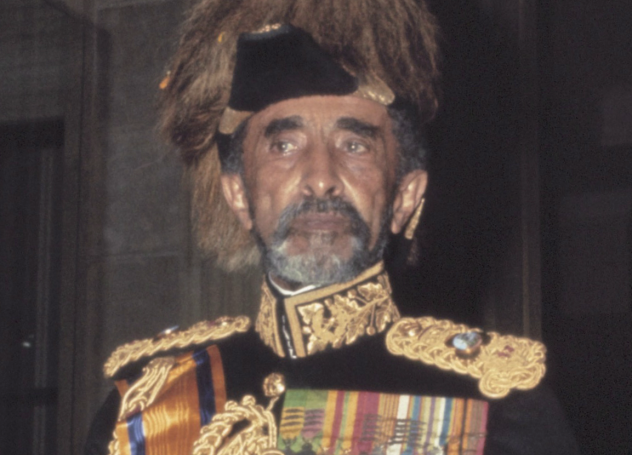
Ras Tafari, the man that inspired and became the heartbeat of the Rastafarian religion, was the last person crowned Emperor of Ethiopia in 1930 and took the name Haile Selassie I. Even before his coronation, Selassie was focused on moving Ethiopia into the modern era, having introduced advancements such as the printing press, cars, telephones, and an overhauled legal system. Although his continued reign would bring further progression in education, health care, and foreign affairs, the emperor failed to eliminate the class system that governed agriculture. He also held a firm grip on the country’s legal system; he essentially put up a facade of reformation even though he reportedly made revisions to the country’s constitution in 1955. Festering disapproval of the emperor’s rule began to surface and would take the form of an attempted coup in December 1960.
A group of determined military officers and associates led by brothers Germame and Mengistu Neway (commander of Ethiopia’s Imperial Guard) plotted to capture Addis Ababa (the capital) while Selassie was out of the country. General Mengistu attempted to rally the soldiers under his command by falsely claiming that there was an uprising that needed to be thwarted in the capital. With the aid of the Imperial Guard, the rebels eventually captured the crown prince and a host of government officials. They were held hostage for a number of days, and 15 of them were later killed. Unfortunately, the rebels’ plan was poorly thought out and had little support from the population as well as key government ministers and officials. It would be the demise of the coup attempt.
Selassie, who had returned from his trip after hearing of the disturbance, outmaneuvered the rebels and retook the capital. Many of the perpetrators later fled into the city’s outskirts and were hunted down and killed, including Germame Neway. Mengistu was court-martialed.
9 Attempted Coup Against Saddam Hussein
Iraq, 1996
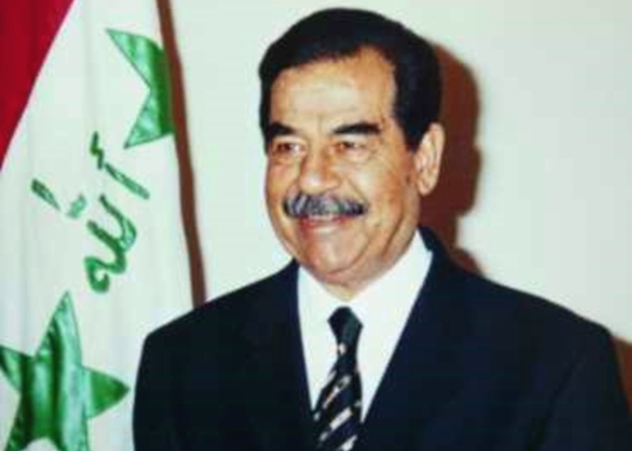
Saddam Hussein, Iraq’s tyrannical president for more than 20 years, ruled with a bloody, iron fist. After coming to power in 1979, Hussein quickly eliminated any opposition by ordering the execution of all outright political threats. A decade before Saddam’s execution in 2006, an attempted coup fell apart almost as soon as it began.
In early 1996, US president Bill Clinton commissioned a reportedly $100-million attempt to oust the Iraqi president through collaborative efforts by the CIA, British intelligence, and a large number of Kurdish and Iraqi agents and recruits. The team, which used the “Iraqi National Accord” (INA) as a front organization, was based in Amman, Jordan, and was led by Dr. Iyad Mohammed Alawi, a former member of the Iraq’s ruling Baath party.
The operation, code-named the “Silver Bullet coup,” was to be carried out at a time when Baghdad was vulnerable as a result of weak relationships within Saddam’s regime and a strained relationship with the king of Jordan. However, things began to quickly go south before the team could complete the mission. Dr. Alawi began to openly admit to the media that he wanted a coup to oust Hussein. Behind the scenes, it was realized that a number of the CIA’s recruits were double agents, the INA’s satellite transmissions were hijacked, and President Hussein knew of their plans. The coup was foiled instantly.
Hussein arrested 160 military officers and conspirators, many of whom were executed.
8 The July Putsch
Austria, 1934
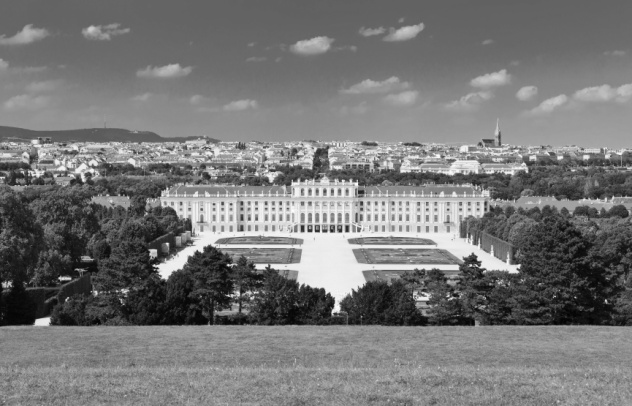
Years before Adolf Hitler rose to infamy as one of history’s most malevolent and murderous dictators, he was appointed Germany’s reich chancellor in January 1933. The relationship between Hitler’s Germany and Austria was a strained one, as Austria’s federal chancellor, Engelbert Dollfuss, refused to bow to Germany’s intimidation and demands, which sought dominance and control over Austria. Austrian Nazis responded with bombings of government offices and officials, which led to the Austrian Nazi Party being outlawed. The revolution that Germany hoped would bring both countries together under Germany’s control was becoming less of a reality, and action had to be taken.
After Hitler implemented a boycott on Austrian trade and systematically interrupted the country’s tourism via inflation of exit visas for Germans into Austria, the country’s economy took a heavy blow. Nevertheless, when Dollfuss thwarted a three-day revolt in February 1934, the strength of Austria was realized, and a putsch (or coup) was set in motion.
The office of the chancellor was forcefully taken by 150 members of SS Regiment 89 on July 25, 1934. Dollfuss was shot and killed. His murder sparked a number of Nazi uprisings throughout Austria, which were hastily suppressed by the Austrian Army. The coup had failed.
Hitler denied involvement in the coup attempt. Many years later, however, the journal of Joseph Goebbels suggested otherwise. In an entry dated July, 22, 1934, Goebbels, Hitler’s friend and minister of propaganda, wrote, “Sunday: at the Fuehrer’s . . . Austrian question. Whether it will work? I’m very skeptical.” Goebbels was right.
7 The Kyujo Incident
Japan, 1945
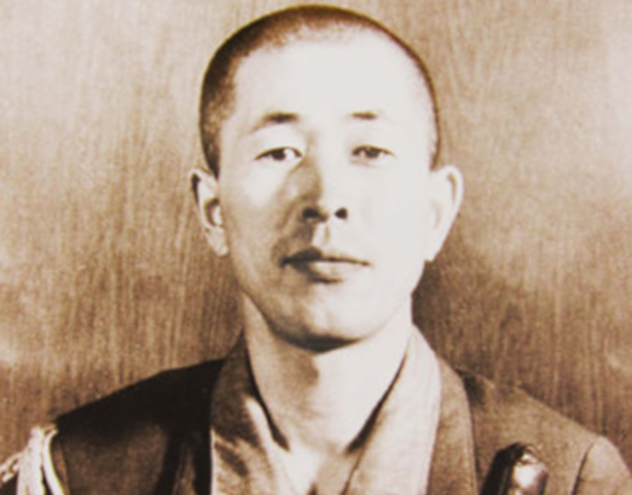
Japan had suffered incredible losses in World War II leading up to the summer of 1945. However, the Japanese initially refused to sign the Potsdam Declaration, which demanded the unconditional surrender of Japan’s armed forces to the Allies. In response to their defiance, President Harry Truman commissioned the bombing of Hiroshima on August 6, killing 80,000 and wounding many others. After the bombing of Nagasaki three days later, Emperor Hirohito and Prime Minister Suzuki pushed for the signing of the agreement, a move that was not well-received by the Imperial Guard, which feared that the imperial system would be abolished upon signing. Led by Major Kenji Hatanaka (pictured above), a coup attempt was executed on August 14, mere hours before the emperor would publicly announce the surrender of Japan to the nation.
After Hirohito recorded his address to the people that night, a group of officers led by Hatanaka seized the palace and cut communications with the outside world, hoping to stop Hirohito from making the announcement. Hatanka and his men had hoped to preserve the imperial system and to form a new government with the army minister at the helm. But because the emperor’s recordings were safely hidden, their efforts were in vain.
At 11:00 AM, shortly before the emperor’s address would air, Hatanaka put a bullet in his head. Many of the other perpetrators also committed suicide.
6 Coup Attempt Against Corazon Aquino
Philippines, 1989
Corazon Aquino accomplished a major feat in February 1986 by becoming the first female president of the Philippines. But the promise of reform and hope that Aquino represented for millions was quickly dashed, as her presidency portrayed weaknesses, inexperience, and insensitivity to the needs of the people.
Ferdinand Marcos, the former dictator and an embodiment of corruption, had essentially left the country in economic ruin, having pocketed a reported $800 million for himself and his family, which had collectively looted billions of dollars from the country. Aquino’s own husband, a budding politician, was exiled by Marcos after being prosecuted on (fabricated) murder charges. When he returned from exile in 1983, he was assassinated.
Corazon returned to the Philippines the following day and immediately began to channel her grief, as well as the support of the people, into political opposition toward Marcos. Three years, later, Aquino was president, and Marcos was living in exile in the US. Instead of becoming the strong leader that the Philippines needed, though, Aquino made many missteps, including banning divorce and abortion, establishing a government that only benefited wealthy and influential families (including hers), and even raising the price of gas by 25 percent at one point.
On December 1, 1989, the greatest threat to Aquino’s presidency came in the form an attempted coup that might have succeeded if it had not been for US intervention. The presidential palace was bombed by rebel T-28 aircraft, two radio stations were seized, and the air force headquarters was locked down. Luckily for Aquino, US Air Force F-4 Phantom jets streaked across the night sky, putting a dent in the coup attempt. In the end, Aquino managed to hang on to her presidency, if only temporarily.
5 The Kapp Putsch
Germany, 1920
World War I is undoubtedly one the bloodiest wars that the world has ever seen, costing 10 million soldiers their lives. At the end of the war, the Western powers aligned to enact a number of treaties against the nations that were defeated, like Germany. Germany received the harshest terms upon signing the Treaty of Versailles in 1919—reduction of the German Army, loss of a large number of territories, and a number of other stipulations. Amid economic hardships, Germany’s newly formed governing body, The Weimar Republic, faced the full brunt of the people’s opposition to the signing of the treaty. A coup was looming.
Hoping to topple the Republic, General Walther von Luttwitz and Wolfgang Kapp (who founded the Fatherland Party) marched into Berlin with 6,000 troops on March 13, 1920. The legion was met with mixed reviews, however. Many Germans didn’t accept the putsch and openly expressed their dislike for what was happening. Kapp and company were unable to effectively communicate with the country as a whole due to uncooperative press. By March 14, all printers in the capital were on strike. Additionally, the putschists couldn’t persuade many people to join their fledgling cabinet. Many Germans resisted the coup attempt and went on with their daily lives.
The Republic’s president, Friedrich Ebert, publicly asked the people to strike in order to suppress and combat the military coup. With the country at a halt, support weaning, and what little control they had slipping from their grasp, Kapp and his supporters formally announced their resignation on March 17, 1920, only four days after the coup had begun. Luttwitz fled to Hungary, and Kapp fled to Sweden.
4 The Algiers Putsch
France, 1961
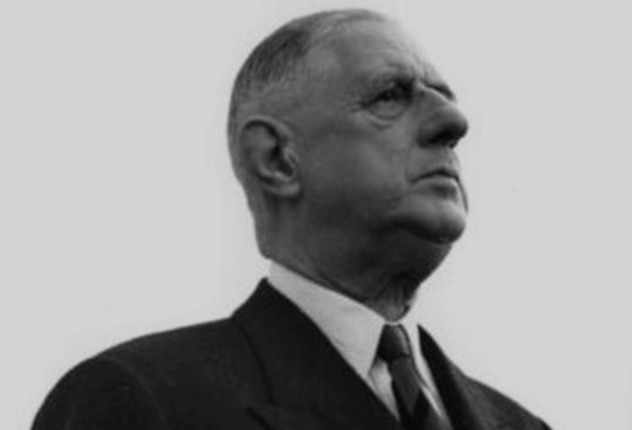
Charles de Gaulle became president of France’s Fifth Republic in 1959, a time when a rebel group called the Front de Liberation Nationale (FLN) had been fighting the occupation of Algeria by France for nearly seven years. When de Gaulle made it known that he intended to enter into negotiations with the FLN and grant the colony independence, it did not sit well with French generals commanding forces in Algeria.
On the night of April 21, 1961, four generals (Maurice Challe, Edmond Jouhad, Andre Zeller, and Raoul Salan) led a regiment of paratroopers into Algiers, where they took control of the government and all media outlets and stations with little opposition from the armed forces. The takeover went swimmingly in its initial stages, during which any person posing a threat to the coup was arrested, including generals that remained loyal to France.
De Gaulle, fearing an invasion of France, made a public plea to his people to resist the coup and support the government by going on strike for one hour on April 24. Ten million French workers complied with de Gaulle, and the show of support for the president was enough to undermine the coup. By April 25, the paratroopers had pulled out of Algiers without ever firing a single shot throughout the entire ordeal.
Even though the coup attempt was a rather peaceful effort, de Gaulle came dangerously close to tragedy. If the 500,000 French troops stationed in Algiers were swayed against him, the outcome could have been disastrous for France. Algeria went on to receive its independence in 1962.
3 Kenya’s First Coup Attempt
1982
After becoming president in 1978, Daniel Arap Moi made several promises to do right by the Kenyan people, protesting that he would stamp out corruption, “tribalism,” and other ills that had previously plagued the African nation. He won the people’s trust by bringing swift justice to those in high-ranking positions who were involved in corrupt activities. Behind closed doors, however, Moi was a man who fiercely guarded his leadership, quickly outmaneuvering and thwarting any political opposition that came against him during the early years of his presidency. He moved to centralize the government, making Kenya a one-party state where political opposition became illegal and the police were used as an extension of his dictatorship. It wasn’t until August 1982 that Moi would come up against his, as well as the country’s, first attempted coup d’etat since it gained independence.
At 2:00 AM on August 1, a group of Kenyan air force officers made their move against the president. The men seized the international airport, three airbases, the post office, and the all-important radio station. Over the airwaves, they proclaimed the formation of the People’s Redemption Council, while troops marched through the streets of Nairobi encouraging the people to rebel. Although many civilians were timid to do so, quite a few university students supported the coup.
Interestingly, the rebellious troops—many of whom were drunk and looting—made no attempt to capture the president, and they garnered little to no support from the remaining air force troops. The fighter jets that were supposed to be used in the botched attempt were sabotaged by troops loyal to the president. Furthermore, the sources that transmitted to the radio station were never seized, an additional oversight that led to the eventual downfall of the coup.
After intense fighting in the city, the radio station was recaptured by the government, Moi returned to the city, and the rebels were defeated. Unfortunately, the insurrection by the rebels created a ripple effect that saw civilians stealing cars, raping women, and looting. After the dust settled, the unofficial estimated death toll was between 600 and 1,800 people.
2 Soviet Coup Attempt Against Mikhail Gorbachev
1991
Unlike many leaders who face coups, Mikhail Gorbachev, the Soviet Union’s last president, was recognized for his peaceful and diplomatic approach to foreign affairs, having been awarded the Nobel prize in 1990. Still, the Soviet Union was not without its problems: The economy was weak, there was infighting among various ethnicities within the USSR, Lithuanians and Ukrainians wanted independence, and an outspoken and popular Boris Yeltsin (president of the Russian Republic) had emerged on the political scene. When Gorbachev hinted at signing a treaty that would dissolve the USSR into separate states, the idea was not warmly received.
Led by uncompromising government and military communists, the coup was initiated on August, 18, 1991. The group responsible, referred to as the State Emergency Committee, had Gorbachev put under house arrest while he was on vacation in Crimea, where (failed) attempts were made to force him to resign office and abandon the treaty.
Meanwhile, in Moscow, protestors, along with Yeltsin, who probably should have been apprehended, took mainly to the streets outside Moscow’s White House to denounce the coup attempt. Yeltsin famously stood atop a tank in the front of the White House in an act of defiance against the conspirators. In the end, Yeltsin gained notoriety, the unorganized coup failed to result in any arrests, and the armed forces didn’t use any firepower on the crowds. After the commotion had settled, the perpetrators were jailed, and two of the conspirators committed suicide.
What made the Soviet coup attempt significant were the events that followed. Gorbachev’s regime was severely weakened and never recovered after the fiasco. By December of that same year, all the republics declared themselves liberated, and the USSR was no more.
1 Coup Attempt Against President Sukarno
Indonesia, 1965
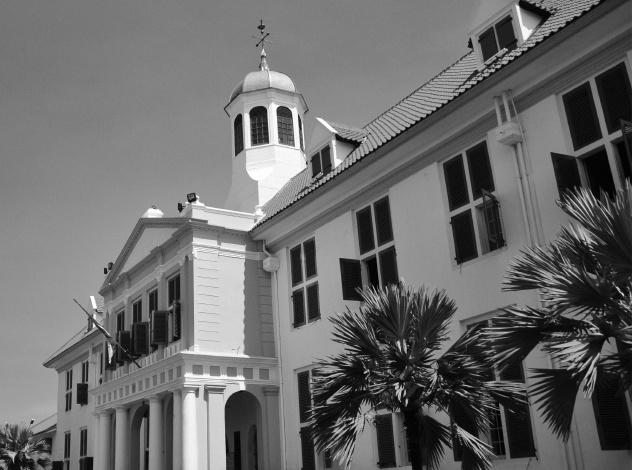
1945 was a landmark year for the new Republic of Indonesia; the people elected Sukarno (his only name) as the country’s first president. During his time in office, Sukarno sought to unify the various religions and ethnicities that were represented among the nation’s many islands. Economically, however, the country was suffering. In 1965, inflation was as high as 650 percent, people were starving to death, there were widespread rice shortages, profits from exports were low, and the country’s physical infrastructure was poor. Furthermore, a reported 75 percent of the country’s budget was being pumped into the military.
In response to the declining economy and the military and civilian corruption that had gripped the nation by the throat, the popularity and membership of Indonesia’s Communist Party (PKI) grew exponentially. By 1965, the PKI boasted three and a half million Indonesian members, making it the world’s third largest communist Party. The general consensus was that the PKI would take control of the country by the next election. This, however, proved not to be the case.
On September 30, 1965, a group of military conspirators known as the “September 30th Movement,” led by Lieutenant Colonel Untung of the President’s Guard, had managed to kidnap six high-ranking army generals. The following morning, all but one were killed. Key locations around Jakarta, including the president’s palace and national radio station, were secured in the coup as well. But soon after the group made their declarations and intentions known via radio, their demise became imminent.
Sukarno’s commander of the Army Strategic Reserve, General Suharto, managed to regain control of the capital, and the coup, which the government blamed on the PKI, was declared a failure. What followed was one of the worst genocides that the 20th century had ever seen. With Suharto at the helm, an estimated 500,000 PKI members and sympathizers were hunted down and killed. Another one million people were either jailed or exiled.
